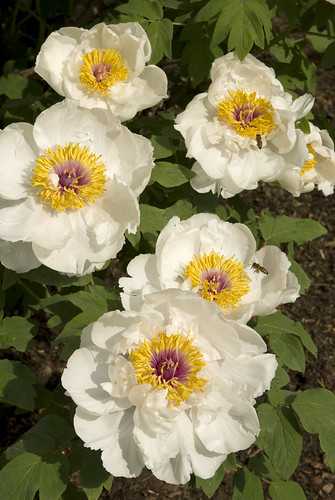In the Conservatory: Emily Dickinson’s Garden
Posted in Emily Dickinson, Exhibitions on May 4 2010, by Plant Talk
 |
Jessica Blohm is Interpretive Specialist for Public Education. |
 Scholars have long speculated about Emily Dickinson’s interest in plants. She was, in fact, an avid gardener and nature enthusiast. Many of her poems and letters allude to wildflowers and traditional herbaceous garden plants.
Scholars have long speculated about Emily Dickinson’s interest in plants. She was, in fact, an avid gardener and nature enthusiast. Many of her poems and letters allude to wildflowers and traditional herbaceous garden plants.
Emily Dickinson’s Garden: The Poetry of Flowers features in the Enid A. Haupt Conservatory a re-creation of Dickinson’s own mid-19th-century New England garden, an interpretation Garden curators have been able to craft from extensive research and careful reading of her poems and letters. On display are Dickinson’s favorites, including daisies, daylilies, tulips, roses, lilies, and others that inspired so much of her poetry. Not only did she grow plants, she also collected flowers from neighboring meadows and the surrounding landscape.
Flowers were one of her favorite metaphors; she used them as images in her poems and as subjects for her letters. Following is a selection of flowers that Dickinson was particularly fond of.
Today we spotlight the peony (Paeonia). Dickinson’s niece, Martha “Mattie” Dickinson Bianchi described “ribbons of peony hedges” growing along the edges of her aunt’s flower garden. Dickinson grew peonies in pink, white, and red. She often compared the pointed tips of the young shoots as they emerged from the ground in spring to red noses.
In a letter dated late April 1859 Dickinson says, “Tell Vinnie [her sister] I counted three peony noses, red as Sammie Matthews’s, just out of the ground.”
I hide Myself within my flower,
That fading from your Vase,
You, unsuspecting, feel for me –
Almost a loneliness.
